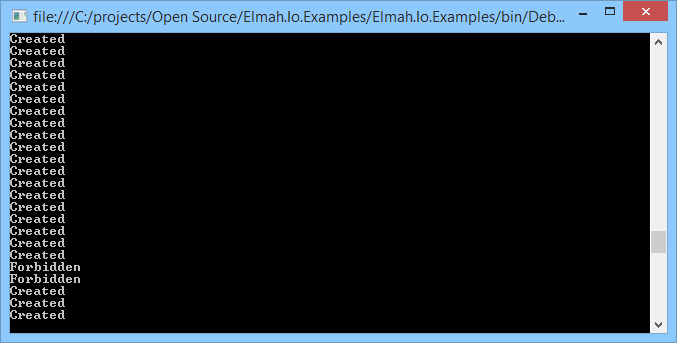New Feature: Burst Protection
Since writing this post, Burst Protection has been replaced with API request limits. Also, elmah.io no longer have soft limits. When you reach your monthly message quota, we stop logging new errors until the issue has been resolved.
We just pushed a new feature to all you guys and gals: Burst Protection.
I'm not saying that it ever happened to you, but you probably know someone, who knows someone, whose cousin knows someone … well you get it. You released a new version of your software to production and suddenly everything starts failing. All of your users are frustrated and your operations team run around like headless chickens. When stuff like this is happening, your website typically logs a lot of errors. Depending on which elmah.io plan you've purchased, you have a maximum number of allowed errors. Even though this number is a soft limit, we cannot guarantee that we store everything if you start logging thousands and thousands of errors within a short period of time. Burst Protection to the rescue!
With Burst Protection we make an intelligent decision when your site suddenly starts pushing a shit load of errors to elmah.io. This means that only a percentage of the errors are actually logged. This makes it easier for you to keep within the quota and also makes it easier for you to track down the actual errors.
So how does elmah.io respond when under pressure? Let's write a little evil piece of code:
for (var i = 0; i < 500; i++)
{
Task.Factory.StartNew(() =>
{
var request = (HttpWebRequest)WebRequest.Create("https://elmah.io/api/errors?logid=dbba9674-6fbf-4ebe-ada9-0c74dc77cda5");
request.Method = "POST";
request.ContentType = "application/x-www-form-urlencoded";
var elmahError = new Error(new ApplicationException());
var errorString = ErrorXml.EncodeString(elmahError);
var errorStringEncoded = HttpUtility.UrlEncode(errorString);
var bytes = Encoding.UTF8.GetBytes("=" + errorStringEncoded);
request.ContentLength = bytes.Length;
var outputStream = request.GetRequestStream();
outputStream.Write(bytes, 0, bytes.Length);
HttpWebResponse response;
try
{
response = (HttpWebResponse)request.GetResponse();
}
catch (WebException e)
{
response = (HttpWebResponse) e.Response;
}
Console.WriteLine(response.StatusCode);
});
}
The short version: Perform 500 requests to the elmah.io API within a short period of time. HTTPS request example is taken from one of the samples. Here's a screenshot of the output after a few hundred errors were logged:

As you can see, elmah.io starts returning a different status code for some of the errors. If you're using the elmah.io NuGet package for your web application, you won't even notice the different status code, because this is handled within the client.
elmah.io: Error logging and Uptime Monitoring for your web apps
This blog post is brought to you by elmah.io. elmah.io is error logging, uptime monitoring, deployment tracking, and service heartbeats for your .NET and JavaScript applications. Stop relying on your users to notify you when something is wrong or dig through hundreds of megabytes of log files spread across servers. With elmah.io, we store all of your log messages, notify you through popular channels like email, Slack, and Microsoft Teams, and help you fix errors fast.
See how we can help you monitor your website for crashes Monitor your website
